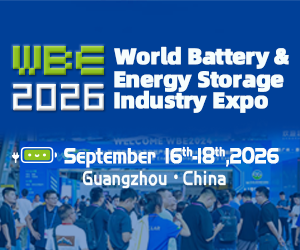Post - Articles
India plans stricter efficiency regulations
- 15 years ago (2010-05-24)
- David Flin
The Indian Government, which has long sought to protect local power equipment makers from Chinese rivals, is planning to introduce stricter efficiency norms that may make it difficult for Chinese manufacturers to compete even for private sector orders.

WBE (World Battery and Energy Storage Expo) 2026
The Power Ministry has forwarded to the Law Ministry specifications that have been prepared by the Central Electricity Authority (CEA), India’s top power sector planning body, for super-critical power generation equipment. The Law Ministry will vet the specifications before they are enforced. A Power Ministry official said: “We’ve sent the specifications set by the CEA to the Law Ministry. After it comes back to use, we will notify them. This will help in improving project efficiency and will reduce emissions. We expect to notify this shortly.”
Stricter norms for heat rates for all supercritical units in the country will permit a “maximum gross turbine cycle heat rate of 1850 kcal/kWh for turbine-driven boiler feed pumps” and “1810 kcal/kWh for motor-drive BFPs”. The move comes with the backdrop of tension between India and China over equipment supplies. Over the last year, Indian power equipment makers such as Bharat Heavy Electricals Ltd (BHEL) and Larsen and Toubro (L&T) have lobbied against cheaper imports from China.
While a majority of 660MW supercritical project orders (accounting for 17,160MW) are being placed with Chinese firms such as Dongfang Electric, Shanghai Electric Power and Shanghai Electric Power Construction, implementation of these new norms may rule out imports from them as their equipment heat rates do not yet currently meet the new standards.
Li Qi, in charge of Dongfang’s India office, said: “After some modifications to our equipment, we’ll be able to meet these requirements as we have proven designs.”
